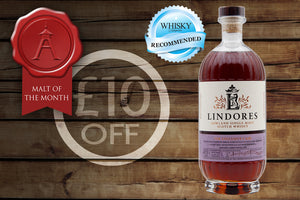
Springbank
Springbank is arguably Scotland’s greatest distillery currently in production. It’s a survived through the ravages of time that blighted distilleries across Campbeltown and reduced their number to a mere handful....
Springbank
Springbank is arguably Scotland’s greatest distillery currently in production. It’s a survived through the ravages of time that blighted distilleries across Campbeltown and reduced their number to a mere handful. This remote town in Argyll, has a strong whisky history and a passion for producing a quality dram using traditional methods. Such dedication to its craft means that today Springbank is the only distillery that does everything on site from malting to bottling and is respected across the industry even if only in some quarters for its stubbornness.
The use of traditional floor malting has moved away from distilleries over the decades and now resides at central facilities that ship their malt across Scotland. A handful of distilleries such as Laphroaig, Bowmore and Highland Park still use this authentic method, but are only able to support 10-20% of their requirements. It’s labour intensive and costly, with the grain needing turned every 8 hours by a team of men, but these things don’t deter Springbank that relies on this method for all its malt. Like Bruichladdich and the Isle of Harris distillery, it sees itself as an important part of the community. Able to offer employment in a remote region of Scotland it was the first distillery in Scotland to adopt the Living Wage ethic whilst remaining profitable.
No other town in Scotland offered the concentration of distilleries that Campbeltown once nurtured during the 1800’s. As a port with access to foreign markets it was a whisky gateway to the rest of the world. Springbank was founded in 1826 by the Reid family who soon realised they had underestimated the cost of running a distillery. This prompted the decision to sell to relatives in the form of the Mitchell brothers in 1837. The Mitchell’s retain ownership of Springbank to this day; meaning it’s one of the few distilleries that is family owned.
Campbeltown’s decay was for a variety of reasons including a change in consumer tastes that preferred the light fruity and floral aspects delivered by Speyside distilleries. In comparison your traditional Campbeltown malts were dense, oily, sooty and almost unforgiving, being assisted by the heavy use of local peat. Another nail in the coffin for the region was the onset of the Great Depression soon followed by Prohibition in the United States. Springbank closed its doors in 1926 and did not restart production until 1933, when conditions improved; many other Campbeltown distilleries were not revived. Another period of closure arrived in 1979, when the Scotch whisky industry as a whole experienced a fall in demand combined with dramatic over production. Springbank simply circled the wagons and waited until 1989 before firing up the stills once again.
To this day Springbank doesn’t follow consumer trends and steadfastly follows its own path. It’s method of distillation is another relic from the past, much along the lines of that seen in Mortlach for the only reason that no one can figure out exactly how the process was formed. There are 3 stills made up of a wash and 2 spirit stills, which would suggest triple distillation but it’s not that straightforward. These are fired by a combination of direct heat and steam coils, with one still utilising a worm tub, the other a condenser and rummagers as used by Glenfarclas.
This method is not the most efficient or productive but it’s the Springbank way and remains intact. What’s easier to consider are the 3 unique stills of spirit produced at the distillery that you can purchase today. The original bottled as Springbank is lightly peated and distilled 2.5 times, whereas Longrow, which takes is name from a neighbouring distillery, is a heavily peated spirit that is distilled twice. The other type of spirit is called Hazelburn after a lost Campbeltown distillery that was famous of its triple distillation and Springbank started producing this unpeated whisky in 1997.
The distillery releases various bottlings throughout the year including the much sought after Local Barley series and a 25-year-old Springbank. As its able to support various styles of new make spirit, it engages in various experiments through the implementation of different types of wood, whether it’s a Barolo style finish or a full maturation in a rum cask. Experience suggests to expect the unexpected with Springbank where the quality is consistently high and affordably priced.
In 1969 the owners purchased independent bottling company Wm Cadenhead & Co. that releases whiskies and rums from across the world including those from Springbank. Stock is matured in the traditional Campbeltown warehouses and bottled on site with the recent establishment of a second bottling line to cope with increased demand. With a strong local community and international support from whisky enthusiasts, this traditional family distillery is a taste of the past in the modern era.


